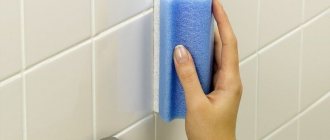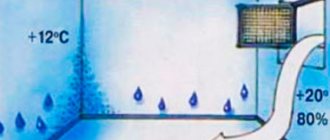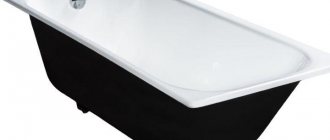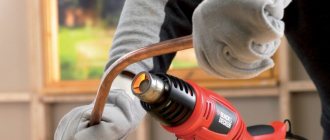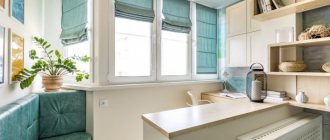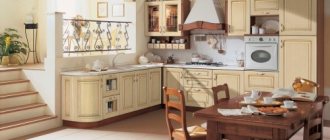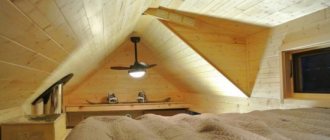It is necessary to supplement the list of sealants with specific products with their descriptions. Write when and what sealant (on what basis) is best to use and why, which one is better suited for what.
- Reasons for appearance
- Why is it dangerous?
- How to eliminate: best methods Using special means
- Using folk remedies
- Silicone based
To prevent leaks in the bathroom, use sealant. Mold, during operation, penetrates the material, changes its color, and has a destructive effect.
Reasons for appearance
Mold is a lower organism, a fungus that reproduces by spores. They are present in the air in small quantities. The settled particles begin to grow under the following conditions:
- air temperature > +20ºС;
- humidity > 90-95%;
- insufficient level of ventilation in the room;
- constant local accumulation of moisture;
- poor hygiene.
When the humidity in the bathroom is high, condensation forms on the wall. It flows down in the form of drops. Areas of increased moisture accumulation occur in the lower part of the wall.
Note! For the surface to dry, the water must evaporate. This process takes several hours. There is constant long-term exposure to moisture, which causes mold growth, since fungus does not grow in dry air.
Mold forms on any surface: wood, plastic, metal, silicone, ceramic tiles. If the material is dense and the fungus cannot penetrate inside, it settles and grows on the surface. Mold can be white, brown, or red. Black is found on the sealant.
Polyurethane sealant
After the drying stage is completed, it becomes similar to rubber, so it is good to use provided that the surface can change its structure over time. They are chosen for work on the roof, are applicable to many substrates, are distinguished by a high degree of adhesion, for this reason they can be applied to damaged silicone seams to quickly close the defect.
After the drying stage is completed, it becomes similar to rubber, so it is good to use provided that the surface can change its structure over time.
Why is it dangerous?
Mold feeds on organic remains and breaks down complex substances into simple compounds.
The negative impact of the fungus manifests itself as follows:
- by feeding on organic matter, it contributes to the destruction of materials;
- spoils the appearance of the finish;
- releases spores that infect new areas;
- causes aspergillosis;
- has a toxic effect, accumulating in the human body.
Forming on sealant and tile joints, mold penetrates deeper. Moving onto load-bearing structures made of concrete, slag, plasterboard, wood, the fungus makes them loose.
Compositions with MS polymers
This is a modernized version of polyurethane-based sealant. The high cost of such products affects their popularity, but they can be used in everyday life. The following advantages are noted:
- Fast curing rate, high strength properties;
- Acceptability of use at any temperature;
- They don't smell;
- Ecological property;
- Suitable for any type of base;
- Can be painted;
- Shelf life: 10 years.
Acceptability of use at any temperature.
How to fix: best methods
Removing mold on silicone in the bathroom begins immediately. A number of remedies can both eliminate the cause of its appearance in the form of blackheads and prevent further spread. The compositions are aimed at destroying fungal spores and stems.
For work you will need:
- protective equipment (gloves, goggles, overalls, respirator);
- devices for cleaning the surface (brush, rags);
- tools for applying the composition (brush, sponge, spray).
Depending on the concentration, antiseptics have a deep and superficial effect.
If the sealant is completely damaged, it is removed and the freed surfaces are cleaned. Treated with disinfectants and protective substances. After this, the seams are insulated again.
Using special means
Hardware and construction stores sell ready-made compounds that act on mold. You can choose a good composition from the following list:
- Prosept Fungi - affects mold, moss, lichen. The product is applied with a sponge or spray. A few minutes are enough for an easy effect. Deep effects and destruction of fungi are achieved by keeping the product for 1-3 days. You can use the bath after washing the treated surface.
- Biotol - used to prevent the formation of fungus and eliminate it. Used at temperatures above +5ºС. Untreated adjacent surfaces are protected with plastic film. For an effective effect, the substance is left for 1-2 days. After cleaning, you can use the room.
- Neomid - removes mold from mineral surfaces. Exposure time is 15-30 minutes. The use of special protection is mandatory. The composition tolerates freezing. The thawed substance must be shaken before use.
- Feidal - designed for processing any surfaces. Does not contain chlorine, safe for humans. Cleaned surfaces can be treated for several hours. If necessary, repeat the treatment.
- Cillit Bang is available for purchase at hardware stores. Not used on surfaces made of marble, brass, copper, textiles, linoleum. When applied, a foam is formed that penetrates the surface. The composition has a shallow effect. Exposure time up to 15 minutes. Next, the product must be washed off with water.
- Hypochlorite-based products: Bagi anti-mold, Domestos, whiteness. The compositions have antifungal activity. Whitens any surfaces. Use with caution on sanitary enamels of bathtubs and shower stalls.
The choice of product is based on its toxicity and the depth of damage to the surface. Chemical compositions are used according to the instructions.
Using folk remedies
Household compositions are prepared from available ingredients.
- Copper sulfate is a blue crystalline powder. It is diluted in the ratio: 1 part powder to 10 parts water. After mixing, the solution is used to treat areas affected by mold. Large surfaces are sprayed with a spray bottle. If you need to process only the seams, use a brush, sponge, brush. After 2 hours, the substance is washed off. The drug is toxic and causes poisoning. Be sure to use a respirator and gloves.
- Vinegar and baking soda can be applied separately or mixed together. The gruel, powder or liquid is applied to the seams using improvised means. Leave to act for 5-10 minutes. Next, wash with water.
- Hydrogen peroxide also works well to whiten surfaces. Before applying the sealant, it is necessary to move and remove all textile and rubber items. If liquid gets on the fabric, it will leave white marks. Peroxide is applied locally for a few minutes, then washed off with water.
- Ammonia. It is used not only for medical, but also for household purposes. One teaspoon is diluted in a glass of water and the surface is treated.
- Solutions with boric acid. There are two recipes. In one of them, 10 g of acid, 100 g of salt and 0.5 liters of water are mixed. In the second, you will need to combine 1 glass of water, 50 g of boric acid, 100 ml of vinegar, 100 ml of peroxide. The mixture is applied to the infected areas for 15 minutes. Then everything is washed off with water.
- Tea tree oil is a natural, powerful antiseptic. A solution (10 ml of oil per 0.5 liter of water) is applied to the walls. You don’t have to wash it off, but you will need to ventilate the room.
- Lemon acid. You will need to squeeze lemon juice and apply it to the walls. Or dissolve the powder in the amount of 1 teaspoon per half liter of water. Finish the seams.
The advantage of homemade recipes is that their preparation does not require expensive substances or special preparation.
Sealing a Bathtub: 3 Easy Steps
To create an even and high-quality seam that will prevent water leaks and high humidity, use the instructions for working with the sealant:
- Make sure the sealing area is clean and free of dust and old sealant residue. If necessary, clean the surface, degrease it, and wipe it dry with a simple cloth.
- Select a sealant that suits the environmental conditions. If you are looking for a bathroom sealant, it should be a water-repellent formula. Some manufacturers offer sealants with additional protection against mold and mildew. Since a humid environment is favorable for the spread of germs, this option will help you get rid of unwanted unsanitary conditions. The easiest way to apply sealant is with a construction gun. Adjust the foam flow using the lever to create an even, single layer seam. Remove excess from the surface. If the gap between the bathtub and the wall is wide, use a roller for convenience.
- Smooth the solution to avoid unevenness. Prepare a solution at home from detergent and water in a 1:1 ratio. Dip your finger into the resulting liquid and smooth out the seam. As a result, you should have a perfectly even strip.
Mold Resistant Sealants
Sealant is an insulating material in the form of a gel or paste. It is used at the joints of structures. In order to prevent the formation and spread of mold, antibacterial additives are added to them.
Silicone based
The best anti-mold bathroom sealant is made from rubber-based silicone.
The material is popular due to its excellent physical and chemical properties:
- resistant to acids, alkalis, oils, alcohols, ultraviolet radiation, radiation;
- withstands temperature range -50 + 200ºС;
- moisture resistant;
- differs in adhesion on many surfaces of glass, wood, plastics, metal, enamel;
- produced in different colors.
Silicone sealants are divided into two types:
- Acidic, containing acetic acid. They are affordable and dry quickly. But they emit vapors that are harmful to humans and lead to the oxidation of metals.
- Neutral - safe for humans. Can be used on any materials, including acrylic and metal. They cost more than acidic ones.
KIM TEC Silicon 101E is a durable silicone sealant-adhesive on an acetate base with additives resistant to fungi. Polymerizes in air into a rubber compound. Not for use with materials sensitive to acetic acid, polyethylene and films. Viable at temperatures -50...+180 ⁰С. Designed to work with plumbing and craft materials. Can be used indoors in swimming pools.
Pufas Silikon Fugendicht - suitable for sealing wide joints with a thickness of up to 25 mm. Curing time 3 mm per day. Elastic, stretch up to 25%. Applicable to all materials except stone and galvanized metals. Has fungicidal additives against mold formation.
Moment sealant sanitary - designed for sealing seams, joints, voids in bathrooms, kitchens, showers, glazing frames. For gluing parts made of ceramics, metal, wood. The one-component silicone composition has antiseptic additives against the occurrence of fungus and mold. Can be used indoors and outdoors. Resistant to chemicals and water, elastic.
For wet rooms, a sanitary sealant with fungicidal additives is used that is resistant to the formation and spread of mold.
Based on acrylic
Acrylic-based sealants vary in their degree of moisture resistance. Non-moisture-resistant material is additionally protected with pastes.
Pros of acrylic:
- hardens quickly and gains maximum strength within 24 hours;
- diluted with water to the desired consistency;
- non-toxic, odorless;
- UV resistant;
- does not turn yellow;
- Cured plastic is easy to dismantle.
Cons of sealant:
- hardened sealant is not plastic;
- with prolonged exposure to moisture, it peels off from the surface.
Pufas Acryl Fugendicht A30 is an acrylic sealant with fungicidal additives. Flexible and waterproof once completely dry. Suitable for wet rooms when working with concrete, plasterboard, ceramic tiles.
Tekadom Acryl Profi - suitable for sealing joints in mineral materials and wood. The seams that have gained strength are tensile by 15%. Before compaction, the surfaces are cleaned of dirt and may be damp.
VGT sanitary acrylic - used in bathrooms, showers, when processing seams in materials made of glass, wood, ceramics, metal, PVC. The room must be dry during operation. The sealant is not suitable for sealing areas where there is constant accumulation of water. The strength of the connection is achieved within 24 hours.
One-component acrylic materials are not used in damp rooms in places where water accumulates.
Based on acrylic silicone
Acrylic sealant with the addition of silicone is a two-component material. Available in transparent or colored.
It is moisture resistant, but just like one-component, it peels off with prolonged exposure to water. The composition includes antifungal additives. Suitable for wet areas, provided there is no direct contact with liquids.
It is applied with a thickness of 5-6 mm. The prepared surface must be clean and always dry. Moisture is allowed to enter the surface after complete hardening.
Fome Flex silacryl is a silacrylic sealant with antifungal additives. Used in sealing joints of shower cabins, bathtubs, tiles. Odorless, tolerates moisture well, resistant to fungus. It is used in shallow seams, as it hardens slowly 1-2 mm per day. Can be painted after drying.
Auster silacryl differs from the previous sealant in that it is not suitable for use in areas with large accumulations of moisture. Also has anti-mold additives.
Based on polyurethane
Polyurethane sealant is developed on the basis of polymers. Used for sealing new and old surfaces after repairs. Adheses to silicone residues. Dries in 12 hours.
Positive properties:
- adhesion on any materials (ceramics, concrete, enamel, plastic);
- moisture resistance;
- maintainability;
- long service life.
They produce one- and two-component polyurethane sealants. For polymerization of the former, the presence of oxygen is necessary. The second contains a hardener.
These sealants can be used to fill deep seams that, when dry, resemble rubber. The material is used not only for insulation, but also for gluing surfaces. It is used to glue plastic or metal baseboards in the bathroom. The adhesive layer can be adjusted and imperfections can be eliminated within 20 minutes.
Polyflex 442 is a medium-modulus sealant for interior and exterior use. Tolerates exposure to fresh and salt water, grease, and cleaning agents. Elastic, used in expansion joints.
Tytan power flex - silanized polymer, adhesive, sealant. Suitable for gluing porous and non-porous materials (glass, stone, metal, plastic). Forms a strong, elastic, waterproof seam. Cures 4 mm per day.
Rubberflex PRO PU-25 - for sealing joints of building structures made of concrete, metal, wood. Withstands temperatures -60…+90ºС. Tolerates precipitation and moisture well. Forms a strong elastic connection, has good adhesion to concrete, granite, glass, wood, PVC. Does not require preliminary priming of the surface and can be painted.
Before applying any sealant, the surface is cleaned and dried. After installation, protect the surface from dust, moisture and dirt until the seal is completely dry.
Which to choose?
Silicone, acrylic-silicone, polyurethane sealants are used in places where water accumulates. Neutral seals are universal, chemically resistant, suitable for any materials. Acetate-based compounds are not used on materials that are vulnerable to acetic acid.
Expansion movable seams are filled with polyurethane sealants, as they have high elongation. Holds well in wide cavities 6-25 mm.
Acrylic sealants are the weakest. They do not stretch well and require low air humidity during work. Used to fill joints in mineral materials.
Each category produces products with antibacterial additives.
If the problem returns
If, despite all the measures taken to clean the sealant from mold, this could not be done, the fungus has probably penetrated into the deeper layers of the composition. To eliminate it, you will need to remove at least the top layer of waterproofing and apply a new one with an antifungal effect.
Before applying a new sealant, the surface must be treated:
- clear away debris;
- disinfect, for example, with isopropyl alcohol.
All stages of preparing and applying waterproofing must be performed very carefully. After treatment with alcohol, you need to wait 30 minutes to consolidate the effect.
Waterproofing should only be applied to a completely dry surface . After filling the seam with sealant, it is necessary to wait the required time, preventing moisture from entering its surface.
Before using the sealant, you must study the instructions for it, since different manufacturers may have their own application features.
Preventive measures
It is better to prevent the appearance of mold in advance than to get rid of it later. Mold spores are drought and freeze resistant. If the fungus has penetrated deeply into the finish, it will have to be cleaned off.
The following preventive measures are applied:
- at the repair stage, materials with anti-mold additives are selected;
- ventilate and dry the room;
- arrange a ventilation system;
- use dehumidifiers if necessary;
- accumulated contaminants are removed in a timely manner.
Important! To reduce humidity, do not dry wet laundry in the bathroom.
Even after successful removal of the infestation, if precautions are not taken, mold will reappear.
Materials and tools
To independently carry out all the work on sealing joints in the bathroom, you need to prepare a number of tools and consumables in advance:
- sealant gun (if the product is in a cartridge);
- rubber spatula;
- rags;
- masking tape;
- acetone.
For wide cracks, you can purchase an acrylic or polyurethane compound; for narrow and long cracks, silicone sealant is better. For a small amount of work, buy small tube packaging. Before installing the cartridges in the gun, cut the tip at an angle of 45 degrees, then attach the cap as indicated on the package. Then insert the sealant into the tool and get to work.
Conclusion
Mold is a resilient organism. Its growth takes place actively in damp rooms. On finishing materials, the fungus appears in the form of black spots. Recommendations for eliminating it:
- Completely contaminated surfaces are dismantled.
- To prevent the formation of mold, building materials with antibacterial additives are used.
- The resulting fungus is removed with ready-made chemical compounds and folk remedies. Copper sulfate, vinegar, citric and boric acid, soda, and hydrogen peroxide are used.
- The bathroom is ventilated, humidity is monitored, and cleanliness is maintained.
If you notice the problem in time and start fighting, you can stop the growth and further spread of the fungus.
Comparison table of characteristics
In order to compare the presented options, we suggest considering a short table with the main characteristics.
| Model | Volume (ml) | Tone | A country | View |
| RAVAK PROFESSIONAL X01200 | 310 | white, transparent | Czech | silicone |
| KIM TEC SILICON ACETAT 101E | 310 | white, transparent | Germany | silicone |
| BEA BELSIL SANITARY ACETATE | 280 | white, transparent | Slovenia | silicone |
| MAKROFLEX SX101 | 85 | white | Estonia | silicones. |
| MOMENT GERMENT | 280 | transparent, white | Germany | acrylic. |
| CERESIT CS 7 | 280 | white | Türkiye | acrylic. |
| MASTERTEKS PM UNIVERSAL | 290 | white | Poland | silicones. |
Tips for use
When sealing a bathroom, you need to place a backing between the plumbing fixtures and the wall so that the polymer composition does not flow down
The optimal consistency of compounds for plumbing work is gel-like, viscous, filling all voids. For small jobs, experts advise stocking up on several small packages rather than one large one.
Depending on the initial conditions and sealing purposes when applying a polymer product, it is recommended:
- For wide joints use acrylic compounds, and for narrow joints use silicone mixtures
- Do not use silicone acid sealants on glass, marble, metal, granite or cement surfaces.
- When filling deep seams between the wall and the plumbing, use a foam backing under the bathroom shelf to prevent the product from dripping
- To fix the corner of the bathroom, also use sealant as glue
Criterias of choice
Read also: TOP 20 Best children's washing powders: review and recommendations for choosing + Reviews
Ease of use is one of the important factors when choosing a sealing composition
A reliable sealant that will firmly adhere to surfaces and protect seams and gaps must have the following characteristics:
- Have high adhesion, do not peel off from the surface
- Withstand the high temperatures found in bathrooms
- Be elastic and withstand mechanical tension, elongation, load
- Have low drying shrinkage
- Harden quickly in air
- Be convenient to use
- Ensure economical consumption
- Possess high resistance to biological damage
In conditions where it is necessary to use sealant in an unheated bathroom in a country or country house, the frost resistance indicator becomes highly important.
The most common plumbing sealants are white and clear, but up to 20 colors of insulating mixture can be found from different manufacturers.
Bleach or white will remove fungus in the bathroom
You can remove fungus from the ceiling and walls with bleach. Don't forget about gloves and a respirator.
- Add bleach to the water in a ratio of 1:10.
- Distribute the resulting solution with a sponge or spray.
- Do not wash off the bleach; it will prevent rot from reoccurring.
- Ventilate the bathroom.
